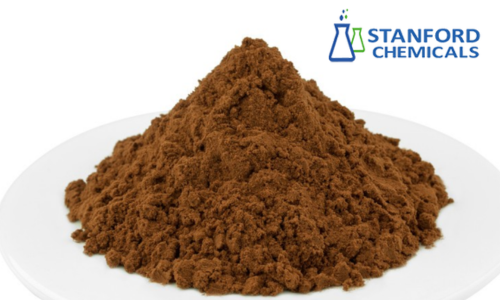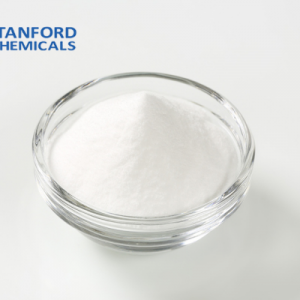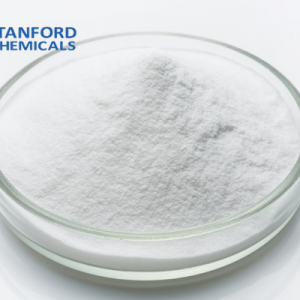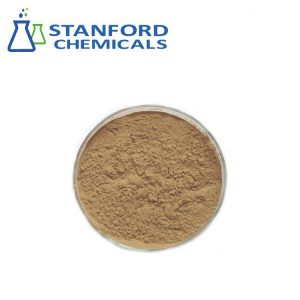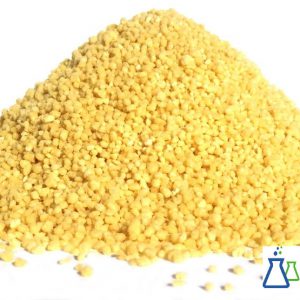- Home
- Food Additives
- Ammonium Iron (III) Citrate (CAS: 1185-57-5)
Ammonium Iron (III) Citrate (CAS: 1185-57-5)
| Catalog No. | NR5482 |
| CAS Number | 1185-57-5 |
| Chemical Formula | C6H8O7·xFe·yNH3 |
| Molecular Weight | 261.975 |
| Appearance | Red to brown or green powder |
| Purity | 99% |
Ammonium Iron (III) Citrate (C6H8O7·xFe·yNH3) is a versatile chemical reagent available on the Stanford Chemicals platform, catering to laboratory research, pharmaceutical synthesis, and a range of chemical applications.
- Description
Description
Ammonium Iron (III) Citrate Description:
Ammonium Iron (III) Citrate is a common organic iron compound widely used as a food additive and iron supplement. It exhibits excellent bioavailability, effectively addressing iron-deficiency anemia while maintaining high safety standards, making it ideal for daily iron supplementation. Additionally, it serves as a coagulant in water and wastewater treatment processes. The iron ions bind with suspended particles and colloids, facilitating their removal from water and thus contributing to water purification.
From a chemical structure perspective, the iron in Ammonium Iron Citrate exists in the ferric (Fe³⁺) state, with citrate acting as a ligand that chelates the iron. This molecular configuration enhances iron absorption in the human body while minimizing gastrointestinal irritation, making it a preferred choice in nutritional and industrial applications.
Ammonium Iron (III) Citrate Specifications:
| Molecular Formula | C6H8O7·xFe·yNH3 |
| Appearance | Red to brown or green powder |
| Density | 1.8 g/cm3 |
| Molecular Weight | 261.975 |
| Water Solubility |
1200 g/L (20℃) |
Ammonium Iron (III) Citrate Advantages:
- Iron Supplementation: It serves as an available source of iron that efficiently prevents iron-deficiency anemia.
- Antioxidant Function: It slows down the oxidation of fats in certain foods, resulting in shelf life extension.
- Color Maintenance: It provides an attractive red color retention in cured products for enhanced visual acceptability.
Ammonium Iron (III) Citrate Uses:
- Nutritional Supplement: Ferric ammonium citrate is a source of iron used in dietary supplements and fortification of food for prevention and treatment of iron deficiency anemia.
- Pharmaceuticals: Within the pharmacy industry, it is used as an active ingredient in certain medications and over-the-counter medication that is aimed towards iron deficiency.
- Water Treatment: It is used as a coagulant during water and wastewater treatment.
- Laboratory Reagent: In a laboratory context, it can be used as a reagent to synthesize nanoparticles and other biochemical and analytical purposes since it has iron and it is complex.
Ammonium Iron (III) Citrate vs Other Iron Salts
| Iron Salt | Bioavailability | GI Irritation | Stability | Price |
| Ferric Ammonium Citrate | High (~90%) | Low | Excellent | Moderate |
| Ferrous Sulfate | Moderate (60-70%) | High | Fair | Low |
| Ferrous Gluconate | High (~80%) | Moderate | Fair | Moderate |
| Amino Acid-Chelated Iron | High (80-90%) | Moderate | Good | High |
Recommended Users of Ammonium Iron (III) Citrate:
- Individuals prone to gastrointestinal discomfort from iron supplements, such as pregnant women and the elderly.
- Those requiring highly bioavailable iron supplements, particularly anemia patients.
- Users seeking iron supplements with superior stability.
- Individuals with high demands for iron absorption and utilization efficiency, including athletes.
FAQ
1. In what ways does ammonium iron citrate differ from ferrous sulfate?
Both are widely used iron supplements, though differing in bioavailability, gastrointestinal tolerance, stability, and cost. Ammonium iron citrate has 90% bioavailability with minimal GI irritation, while ferrous sulfate has 60-70% bioavailability and causes nausea or abdominal pain. In addition, ammonium iron citrate is also more resistant to oxidation compared to readily oxidized ferrous sulfate, although the latter tends to be cheaper.
2. How is ammonium iron citrate extremely bioavailable?
Its good solubility in water is enhanced by increased intestinal absorption. Citric acid chelation of iron ions facilitates the ready transport and absorption of iron within the body.

